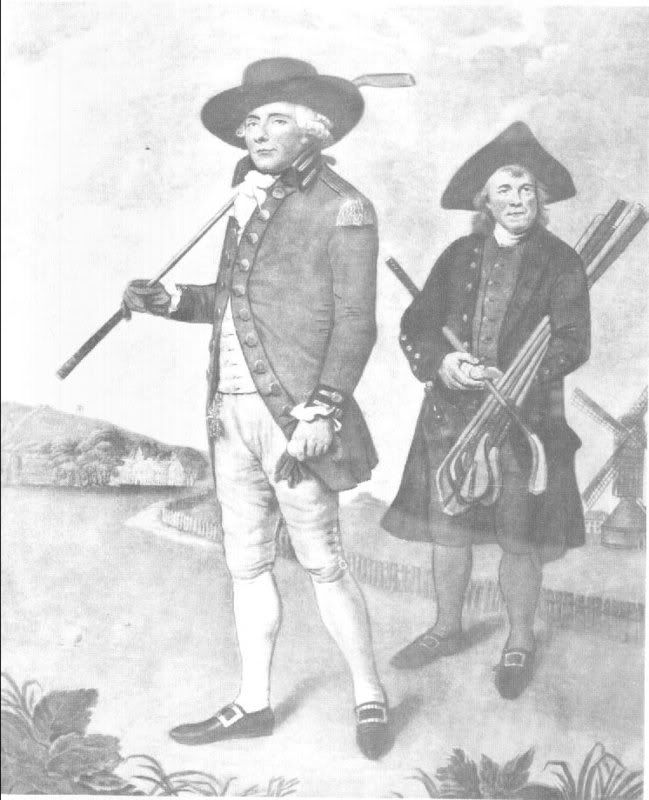Another 140 views keeps this thread alive for one more try. Thank you Mark you correctly identify all three grounds.
The theme is historical Golf in or near London and I believe there are some interesting points to be made about how the early game evolved and exported itself. A close reading shows that Golf did not leave Scotland fully formed.
The first evidence of Golf reaching the Capital from Scotland was around 1608 where the ‘long game’ of golf was played by the well to do in full Red uniform and pomp over Blackheath. The picture below shows fine wooden clubs and a caddy – and this is the image we often have of early golf. There were seven holes, many crossing busy roads and although the course was expanded to include a few more holes it eventually had to be abandoned. However there was such a fondness for it that some kept playing it even after they merged with an existing club and officially moved away a century ago.



The formal park next to the common are the Grounds of Greenwich Observatory, hence the latitude close to Zero. This is to the east of the centre of London. Over time fashions changed, the Palace of Greenwich lost favour and the West became the fashionable place to live.
A couple of miles upstream form Hampton Court Palace the famous actor David Garrick built a country retreat and a ‘temple’ to Shakespeare at Hampton about 20 miles to the west of London. The ‘temple’ can be seen as the white dot in the centre of the photo.

I’ve written about this before and most histories include a reference to this place but they all seem to make the same mistakes. E.G.
Cornish and Whitten
"By 1758 Molesey Hurst at Hampton was played regularly by the actor David Garrick and was praised as a "very good golfing ground" by a party of his Scottish friends."
What we know about this is from a sole source the “Autobiography of Dr Alexander Carlyle”, who traveled with some friends from Central London for a day with Garrick. They were all Scots and they brought clubs and balls with them. They were cheered when they passed a Barracks with Scottish soldiers who spotted the clubs. On arriving they crossed the river and played on ground that was often used for sporting events including Horseracing. Later in the day Carlyle amused the others by ‘running’ balls from within the temple, over a mound and into the river for a bet. This kind of game was typically known as the ‘short game’ in Scotland. Although he does not say so I believe it’s reasonable to conclude he wasn’t using his finest club to chip off a hard floor nor was he using a feathery to deliberately hit into water. This is 150 years after the first organised formal course and club at Blackheath was established in London. Carlyle’s autobiography shows him to have good knowledge of existing Scottish links but clearly the informal games still had their appeal. There is no evidence of Garrick or anyone else playing there again at that time.
So only one to identify.
In all Golf Histories there is reference to “earlier” ball and stick games. I highlight the earlier, because in 1629, Quarter of a Century after Blackheath, Charles 1 was playing this game at the Court of St James. Clearly the evolution of Golf as we know it was not as sequential as the books like to tell it.
Final Q. The game the kng was playing was called ….?
Hint it’s on the (London) Monopoly Board.